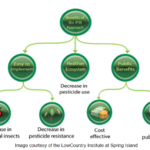Our Watersheds
The Watershed area surrounding the City of Madera is transected by the Fresno River and is a major tributary of the San Joaquin River system. The Fresno River starts in the Oakhurst area, winding its way through the foothills, through Hensley Lake and on to the City of Madera. The river flows southwest past Madera then west to the Eastside Bypass and finally to the San Joaquin River, north of Highway 152.
What is a watershed?
A watershed is an area of land where all water running off the land drains to a particular location. This location can be a stream, river, lake, wetland or ocean. No matter where you live, work, or play, you are in a watershed. A watershed can be millions of square miles or just a few acres.
Watershed Management
Watershed Management is a holistic approach to managing the combined impacts to the water resources and habitats within a watershed. Examples of these impacts are land use practices, erosion, wastewater treatment systems, stormwater collection systems, and pesticide usage. There are four major features unique to watershed management. These features are:
- Create an inventory of the watershed and target priority problems.
- Involve a maximum amount of stakeholders in decision making.
- Use the expertise and authority of the regulatory agencies.
- Measure the success thorough monitoring and other data collection.

